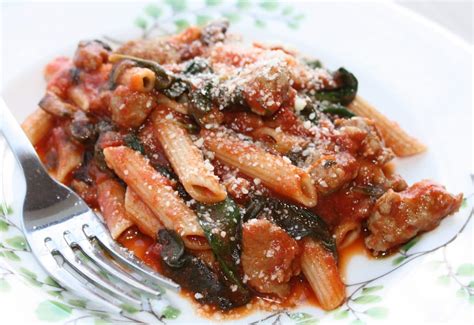5 Low Calorie Bread Choices for a Health Conscious Diet
Bread is a dietary staple for many, but its calorie content can sometimes pose a challenge for those seeking to manage their weight or follow a calorie-restricted diet. Fortunately, there are low calorie bread options available that provide the satisfaction of bread without the high calorie count. Below are some excellent choices, each with their... The post 5 Low Calorie Bread Choices for a Health Conscious Diet appeared first on CalorieTarget.

Bread is a dietary staple for many, but its calorie content can sometimes pose a challenge for those seeking to manage their weight or follow a calorie-restricted diet. Fortunately, there are low calorie bread options available that provide the satisfaction of bread without the high calorie count. Below are some excellent choices, each with their respective calorie counts, to help you make more informed decisions.
1. Whole Grain Bread
Calories: 60-70 calories per slice
Whole grain bread is made from flour that includes all parts of the grain kernel—bran, germ, and endosperm. This bread is rich in dietary fiber, which aids in digestion and promotes a feeling of fullness, making it easier to control portion sizes. Whole grain bread contains essential nutrients like B vitamins (thiamine, riboflavin, niacin), iron, magnesium, and selenium. These nutrients support various bodily functions, including energy metabolism, immune health, and oxygen transport in the blood.Additional the fiber supports digestive health and helps regulate blood sugar levels. The B vitamins present are crucial for energy production and nervous system function. Iron in whole grain bread aids in the oxygen transport within the bloodstream, while magnesium supports muscle function and bone health. Selenium acts as an antioxidant and supports the immune system.
2. Rye Bread
Calories: 55-65 calories per slice
Rye bread, especially varieties made from whole grain rye, is a flavourful and dense option known for its distinctive taste. It’s particularly high in fiber, which can help stabilize blood sugar levels and support digestive health. Rye bread is also a good source of manganese, phosphorus, and copper. These minerals play roles in bone health, energy production, and antioxidant defence.Rye bread provides a significant amount of fiber, aiding digestion and potentially lowering cholesterol levels. It is rich in manganese, which is important for bone formation and various metabolic processes. Phosphorus contributes to healthy bones and teeth, while copper supports iron metabolism and acts as an antioxidant.
3. Sourdough Bread
Calories: 60-70 calories per slice
Sourdough bread is created through a natural fermentation process that not only imparts a unique tangy flavour but also enhances the bioavailability of nutrients. The fermentation process can make sourdough easier to digest and often results in a lower glycaemic index, which can be beneficial for blood sugar control. Sourdough is a good source of B vitamins, folate, and selenium.The fermentation process in sourdough bread introduces beneficial probiotics, which can aid gut health. The bread is also rich in B vitamins, essential for energy conversion and maintaining healthy skin. Folate is vital for DNA synthesis and cell division, while selenium helps protect cells from oxidative damage.
4. Sprouted Grain Bread
Calories: 70-80 calories per slice
Sprouted grain bread is made from grains that have been allowed to sprout before being ground into flour. This sprouting process increases the bread’s nutritional profile, making it higher in protein, fiber, and essential vitamins and minerals. It often contains more vitamins C and E, beta-carotene, and antioxidants than other breads.
Sprouted grain bread is high in protein, which supports muscle repair and growth. It provides vitamins C and E, which are powerful antioxidants that help protect cells from damage. Beta-carotene, converted into vitamin A in the body, is important for vision and immune health. Antioxidants in sprouted grain bread help reduce inflammation and support overall health.
5. Pita Bread
Calories: 70-80 calories per whole pita
Pita bread, particularly whole wheat pita, is a versatile and low-calorie bread option commonly used in Mediterranean cuisine. It provides a pocket-like structure perfect for holding a variety of fillings, making it a convenient choice for nutritious meals. Whole wheat pita is rich in fiber, which aids digestion and helps maintain a healthy weight. It also contains important minerals like iron and magnesium.
Whole wheat pita bread’s fiber content promotes digestive health and satiety. It provides iron, which is essential for preventing anaemia and supporting overall energy levels. Magnesium in pita bread plays a role in over 300 enzymatic reactions, including energy production and muscle function.
Conclusion
Choosing low calorie bread options can be a simple yet effective strategy for managing your calorie intake without sacrificing taste or nutrition. Whether you prefer the hearty texture of rye, the tang of sourdough, the nutritional richness of sprouted grains, or the convenience of pita bread, there are plenty of delicious options to explore. Always check the nutritional information on labels to ensure you’re making the healthiest choice for your dietary needs.
Related Articles
- Top High-Protein Breads to Try
- 10 High Fibre Grains to Include in Your Diet
The post 5 Low Calorie Bread Choices for a Health Conscious Diet appeared first on CalorieTarget.

 mainadmin
mainadmin 










